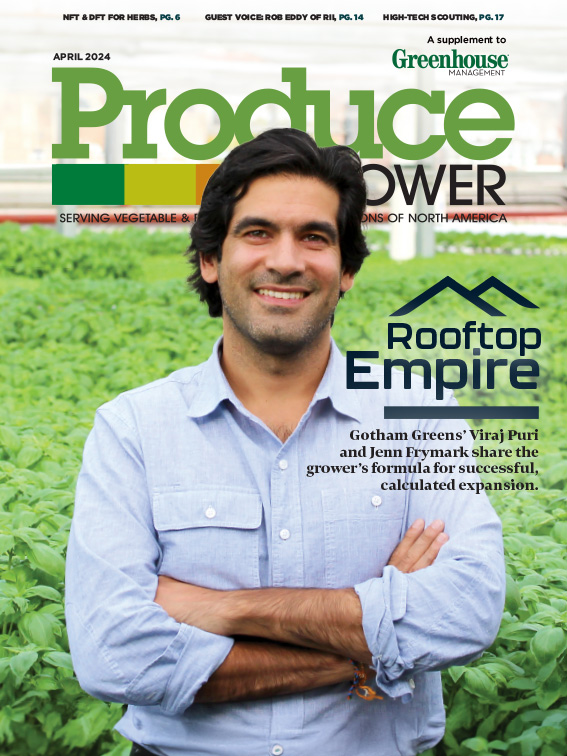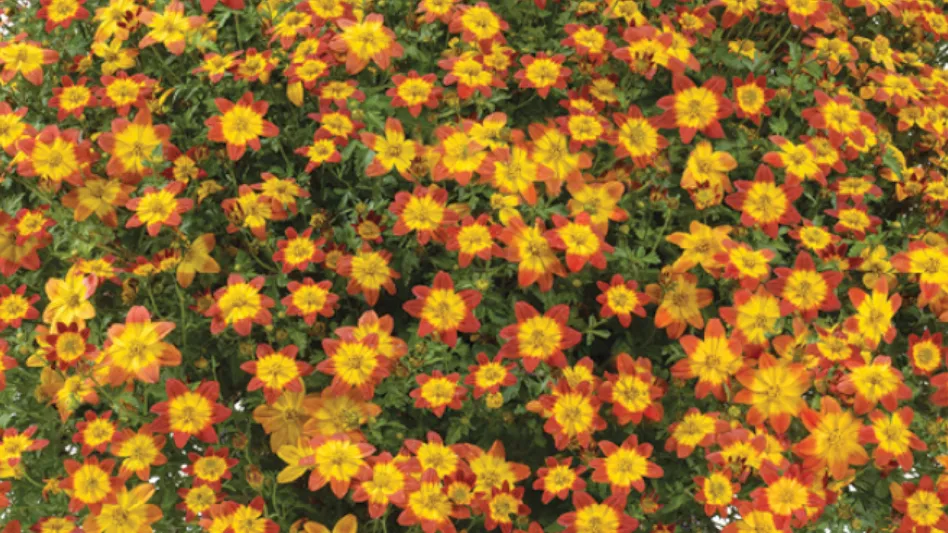
Culinary herbs are adaptable to a variety of means of production. The type of system isn’t only influenced by the final product, like containerized and living versus fresh-cut and packaged herbs, as these can be produced in a myriad of systems. But what’s best for you?
Fresh-cut culinary herbs are commonly produced in recirculating water culture hydroponic systems. The most widely used hydroponic system for growing herbs is the nutrient-film technique (NFT) system. Comprised of channels or “gutters” approximately 2 inches deep, 4 inches wide, and ranging from 4 or 5 feet up to 20 feet long. Gutters are placed on a slight (1% to 3%) slope, with 0.25 to 0.5 gallons of nutrient solution running down the channel per minute. Once crops are ready to harvest, they may either be cut in place — since the channels are usually at waist height — or gutters can be removed for harvest. The low volume of nutrient solution makes channels lightweight, and oxygenation of the nutrient solution isn’t a problem. However, if the nutrient solution isn’t delivered to plants, whether from loss of power or clogged filters or microtubing, plants don’t have long until they can become damaged or die. The other popular system is the deep-flow technique (DFT), sometimes called deep-water culture, raft or raceway culture. This is a system comprised of ponds, channels or “raceways” filled with nutrient solution ranging from approximately 6 to 12 inches deep. On top of the solution, polystyrene rafts hold young plants and float. These systems are usually designed so that rafts are planted and placed on one end, then harvested on the other — making for very efficient labor use. Although there isn’t the same concern for loss of nutrient solution to the crops as with NFT, it is important to maintain oxygen in the solution through aeration or oxygenation.
So, which hydroponic system should you use? In our research, we found hydroponic herb growth to be similar in NFT and DFT systems. We made sure any potentially confounding factors between systems such as different nutrient solution temperatures, light intensity, etc. were the same for each system. When determining which water culture system to use for fresh-cut herb production, the primary decision should be made focusing on labor, ergonomics and workflow.

Although water culture hydroponic systems are certainly the most popular for growing culinary herbs, there are places for substrate-based production systems, including beds and containers. Of course, containers are used for living herbs, but these substrate systems can also be used for fresh-cut production, especially when there is a cut-and-come-again or successive harvest. Another major advantage to using substrate-based production systems compared to water culture systems is a greater ability to use USDA-certified organic fertilizers. Although there are a few organic fertilizers for water culture systems, there are many more that can be used in substrate systems — but not in recirculating water culture — and are more affordable. The substrates used for these types of systems are much more like those used for containerized ornamental plant production, not hydroponic water culture systems. They usually consist of ground sphagnum peat moss and perlite, as well as a variety of components from composted soft bark or wood fiber, rice hulls or coconut coir, or reliable and consistent compost.
While not directly related to production systems, the spacing used when planting out the systems will affect production. There are two types of spacing used in these systems: static and dynamic. Static spacing is when young plants are transplanted into systems (or containers placed in systems, in some instances) and finished on a single spacing. Dynamic spacing is using multiple spacing during finishing. For culinary herbs, two spacings are used in dynamic spacing. The first, a nursery-type spacing, uses close spacings to create high densities when plants do not require space. Once the canopy starts to close, they are placed on a second lower density spacing to maximize light interception. While it requires labor to respace, increased productivity and yields are found by increasing space availability for additional production.
Compared to most controlled-environment agriculture crops grown, culinary herbs are very amendable to several production systems, and that adaptability is valuable for producers. Consider how these systems can best serve your goals.

Explore the April 2024 Issue
Check out more from this issue and find you next story to read.





